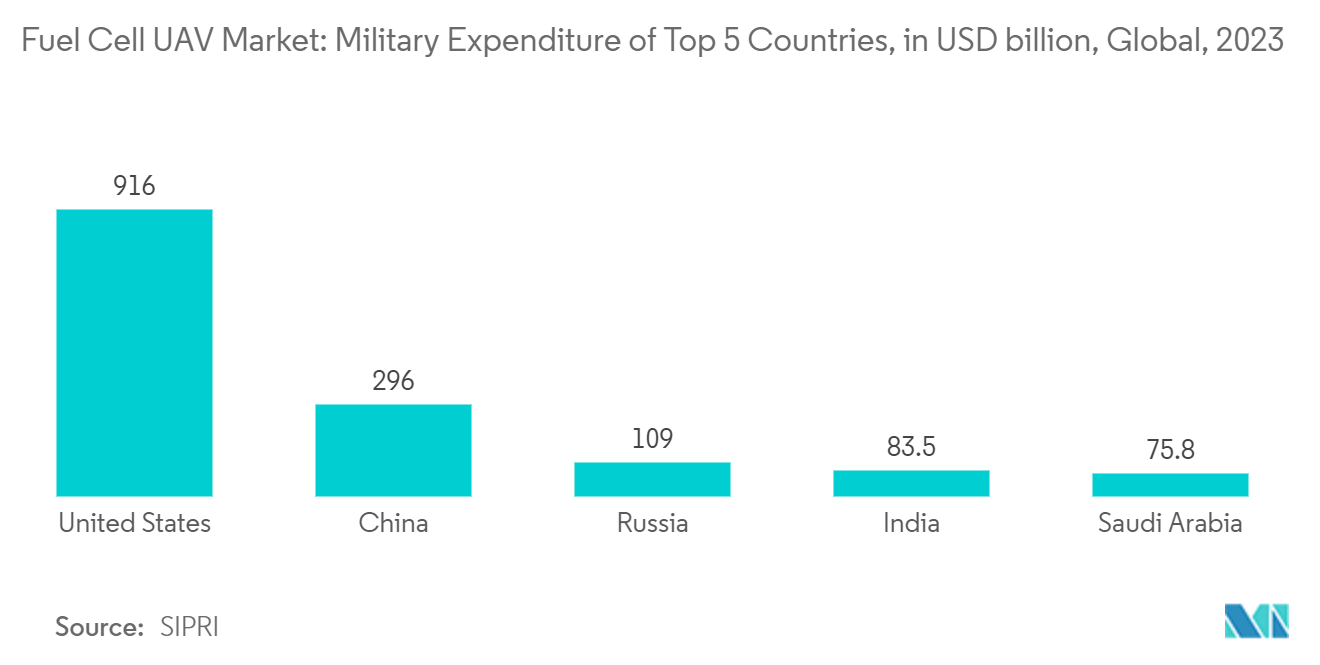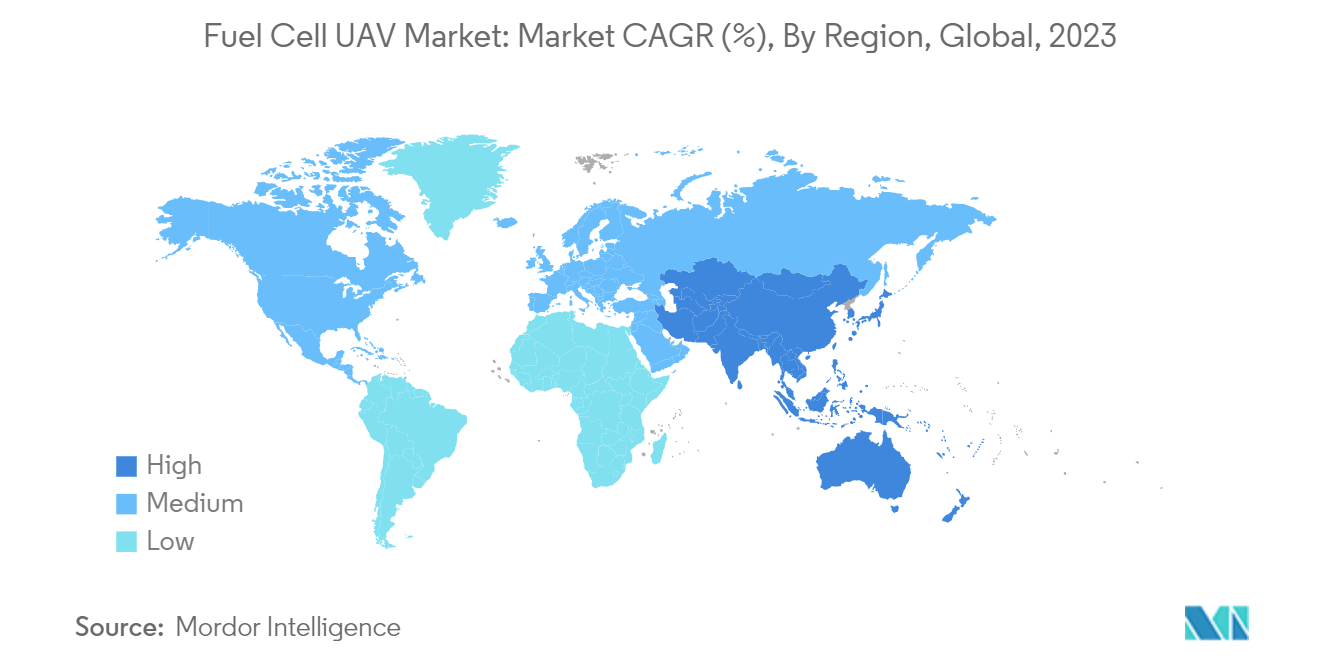Market Trends of Fuel Cell UAV Industry
The Military Segment to Dominate Market Share During the Forecast Period
The military segment is expected to show significant growth during the forecast period. The main factors attributable to such growth include an increase in the budget of various defense forces worldwide and the increased need for advanced fuel cell UAV systems by various military personnel to carry out critical battlefield missions. These factors are expected to contribute to market growth in the future.
The military sector highly demands advanced UAV technologies to enhance surveillance, reconnaissance, and combat capabilities. Fuel Cell UAVs offer extended flight endurance, stealthy operations, and reduced logistical burden, making them well-suited for military applications. Additionally, the military sector has the necessary resources and budget to invest in cutting-edge technologies, leading to the segment gaining a critical advantage in the market.
Fuel cells can be used to power soldiers' gear or fly unmanned aircraft, and they are currently becoming an attractive option for defense personnel worldwide. Fuel cells can increase the airtime of drones by hours and charge in just minutes. Unmanned aerial vehicles (UAVs) are typically used for military operations where manned flights would be too risky or difficult. Moreover, the growing complexity of battlefield scenarios has led to an increase in the usage of UAVs by defense personnel of various countries worldwide to carry out critical mission functions.
The strategic contracts and technological advancements underscore the military's growing reliance on fuel cell UAVs to enhance operational capabilities. The extended flight times reduced logistical burdens, and improved stealth features of fuel cell-powered UAVs make them a valuable asset for military applications, driving their dominant market share in the sector. These developments reflect the ongoing commitment of military forces to integrate advanced fuel cell technologies into their UAV fleets to meet evolving operational requirements.
In December 2023, Haberbusch's NEOEx Systems Inc. won a USD 6.4 million subcontract to develop the US Army's drone refueling and flight systems. NEOEx is developing a portable refueling station that can provide liquid hydrogen to drones weighing up to 55 pounds. UAVs fitted with NEOEx's onboard storage and power systems can fly for as long as 20 hours and cover distances up to 1,000 miles.

Asia-Pacific to Witness Highest Growth During the Forecast Period
The Asia-Pacific fuel cell UAV market is expected to show the highest growth rate during the forecast period. Rising demand for UAVs across sectors like agriculture, surveillance, and logistics will greatly contribute to the adoption of fuel cell technology. Additionally, government initiatives are enhancing UAV capabilities for defense and commercial applications.
Major contracts and strategic collaborations are driving this market. For example, in April 2023, Doosan Mobility Innovation partnered with DroneUp LLC to test and optimize advanced hydrogen fuel cell technology for drone operations. Such partnerships aim to enhance the efficiency and performance of fuel cell UAVs, thereby enhancing their adoption.
At the same time, various fuel cell manufacturers are signing contracts with government and private entities to deploy fuel cell UAVs for various applications. Companies are establishing new production facilities and extending their presence in emerging markets of Asia-Pacific. For example, major fuel cell UAV manufacturers are operating in countries such as China, Japan, and South Korea to address the increasing demand.
Research and development activities are crucial for the advancement of fuel cell technology in UAVs. Leading companies are investing heavily in R&D to improve fuel cell efficiency, power density, and integration with UAV systems. Hydrogen storage and fuel cell design innovations result in lighter, more efficient, and longer-endurance UAVs. Also, collaborations with research institutions and universities foster technological advancements and accelerate the development of next-generation fuel cell UAVs.


